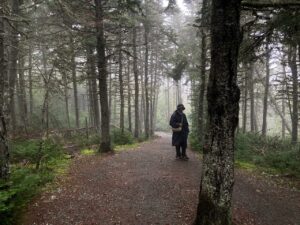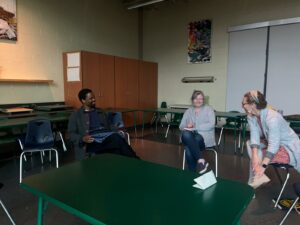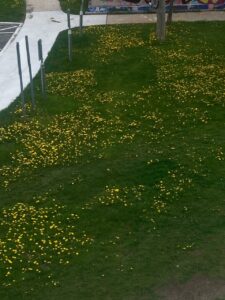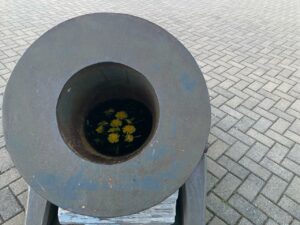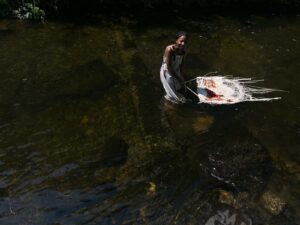Saying goodbye to AIRs M’LK!
July arrived and we said goodbye to resident artists M’LK 🌼 While they were with us, ML’K absorbed the salty air of St John’s, carrying with them, in their demeanor and gaze, their questioning of the concept of culture. By sharing their process through workshops, they offered us a deeper appreciation for our personal objects, and a gentle reflection on whether they carry a trace of cultural influence… Read on their reflection!
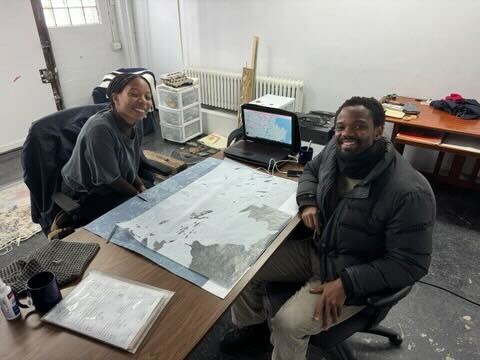
“For six weeks between the 24th of May and the 6th of July we were artists in residence at Eastern Edge Gallery.
This was our first residency so we were a bit uncertain about how to approach the six weeks.
It started out with us falling back into ways of making that we are used to, like tracing maps and mind mapping, which feels like
a good way to orientate but we’re glad that the residency staff ensured us that the most important thing was to feel free and enjoy exploring or figuring out our practice (they didn’t actually say these things). We had such a fun time exploring St. John’s for the first time. Finding out about the history that Newfoundland contributes to us as a global society and the more local history to the communities in St John’s. We found it to be more of a layered and unique place as the days went on, and wanted to find a way to express the beauty in the daily life we were observing.
In our project, Dintho we archive everyday objects of material culture and we wanted to open that up from objects to atmospheres, and the intangible cultures that might exist in a place. So we walked around the city and some of the walking trails around the city, taking pictures and trying to find objects to scan and ways to move beyond scanning.
A few things stood out to us. The spaces that held craft and art workshops were the first, we aren’t used to there being so much opportunity for coming together to make things and the second was probably how there was so much rust in the city, which made sense given the thick fog we were walking in on our first few days.
As a way to develop our project we thought to look at restaurants or shops that were started or run by people from other countries, as they had a lot of material culture that could transport you to the country of origin, like three sisters, casablanca and taste east. There was something about the isolation of the objects in the room and the isolation or difference of these spaces to most other spaces in the city.The articulating of a culture that is not considered of the place was interesting to us, because it spoke of the moving of images, practices, beliefs and ways of making across vast distances. We kept returning to these three establishments but never managed to get to a point of discussion or documentation. This was ok, it maybe spoke to how we really had no business trying to document such an important but distant reality to us.
Over time water became the focus, maybe through the rust, maybe the fog or the fact that we caught the bus on Water Street everyday. But as usual, it became the connecting factor in our thoughts and discussions. The presence of water and other forms of weathering was clear to us in the material culture, such as the use of plastic timber as housing facade, rust on most metal object we crossed, the abundance of crab heads found on the streets, as well as the amount of traveled dandelions that coated the green spaces in Downtown, we were in awe of the material evidence of weathering in the coastal town. The questioning of how to bring this documenting of atmosphere was thought through while engaging with Downtown’s community through hosting workshops, the workshops were a place for us to hear stories of people surrounding a material object they brought to the workshop. The stories were compelling and gave us more insight on life in the city.”
